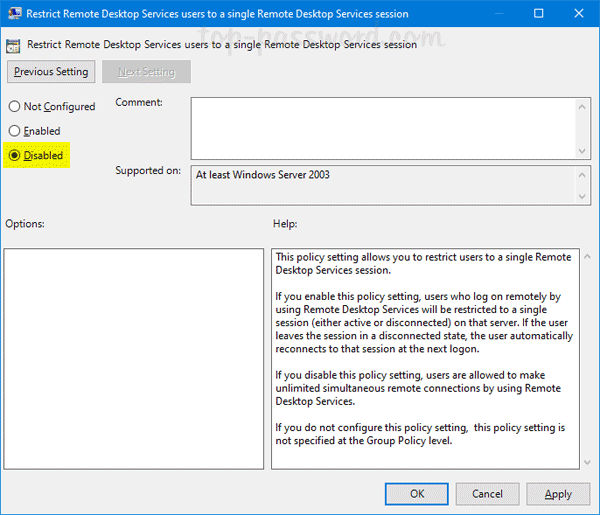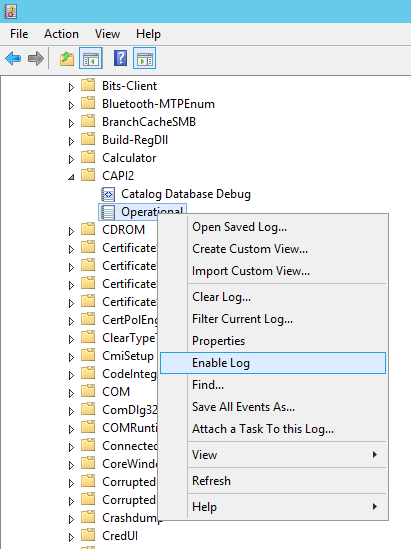

- #Termsrv patch 17763.805 update
- #Termsrv patch 17763.805 full
- #Termsrv patch 17763.805 windows 10
- #Termsrv patch 17763.805 iso
- #Termsrv patch 17763.805 Offline

You might receive an error when attempting to connect, for example:Įrror 1764: The requested operation is not supported. Affected apps are using certain legacy Event Logging APIs. This issue might occur if the local or remote has not yet installed updates released Jor later. If you need to broadly deploy the new Microsoft Edge for business, see Download and deploy Microsoft Edge for businessĪfter installing this or later updates, apps accessing event logs on remote devices might be unable to connect. If you have already encountered this issue by installing the OS using affected custom media, you can mitigate it by directly installing the new Microsoft Edge.
#Termsrv patch 17763.805 Offline
Slipstream this file into your offline image first, then the LCU. You will then have the SSU cab, in this example named SSU-19041.903-圆4.cab. Use the following steps to extract the using SSU:Įxtract the cab from the msu via this command line (using the package for KB5000842 as an example): expand Windows10.0-KB5000842-圆4.msu /f:Windows10.0-KB5000842-圆4.cab Įxtract the SSU from the previously extracted cab via this command line: expand Windows10.0-KB5000842-圆4.cab /f:* To do this with the combined SSU and LCU packages now used for Windows 10, version 20H2 and Windows 10, version 2004, you will need to extract the SSU from the combined package.
#Termsrv patch 17763.805 iso
To avoid this issue, be sure to first slipstream the SSU released Maor later into the custom offline media or ISO image before slipstreaming the LCU.
#Termsrv patch 17763.805 update
Any device connecting to Windows Update should always receive the latest versions of the SSU and latest cumulative update (LCU) without any extra steps. This includes devices using Windows Update for Business. Note Devices that connect directly to Windows Update to receive updates are not affected. This issue is only encountered when custom offline media or ISO images are created by slipstreaming this update into the image without having first installed the standalone servicing stack update (SSU) released Maor later. Note This issue does not occur when stereo is used.ĭevices with Windows installations created from custom offline media or custom ISO image might have Microsoft Edge Legacy removed by this update, but not automatically replaced by the new Microsoft Edge.
#Termsrv patch 17763.805 full
Most users affected by this issue are running games full screen or borderless windowed modes and using two or more monitors.Īfter installing this update, 5.1 Dolby Digital audio may play containing a high-pitched noise or squeak in certain apps when using certain audio devices and Windows settings. Note The affected apps are using the ImmGetCompositionString() function.Ī small subset of users have reported lower than expected performance in games after installing this update. You might need to enter the Furigana characters manually. If you are looking for doing the same thing on Windows 7 or Windows 8, check out the following posts.When using the Microsoft Japanese Input Method Editor (IME) to enter Kanji characters in an app that automatically allows the input of Furigana characters, you might not get the correct Furigana characters.

#Termsrv patch 17763.805 windows 10
As you can see from the screenshot below, I successfully log in 2 accounts to the same Windows 10 computer at the same time. Restart Remote Desktop Service by net start termserviceĪnd let’s give it a try to see if it works. Once it’s all set, copy the termsrv.dll you downloaded earlier into c:\windows\system32 folder to replace the default one that comes with the system. Go to Security tab and give the local administrators group the full control rights. Right-click termsrv.dll file again, and choose Properties. Click OK and OK to close the Properties dialog box. Then click Change link next to Owner: TrustedInstaller and select an account that has local administrator rights. Go to Security tab and click Advanced button. Right-click termsrv.dll file, and choose Properties. Since only TrustedInstaller account can get access to the file, you will need to change its ownership and give the full control permission to Administrators group before you can make changes to this DLL file. Now, open File Explorer, navigator to c:\windows\system32 folder and locate the termsrv.dll file. Then, stop Remote Desktop Service by running the following command on an elevated Command Prompt. Note that the revised version of termsrv.dll is compatible on Windows 10 build 11085.


 0 kommentar(er)
0 kommentar(er)
